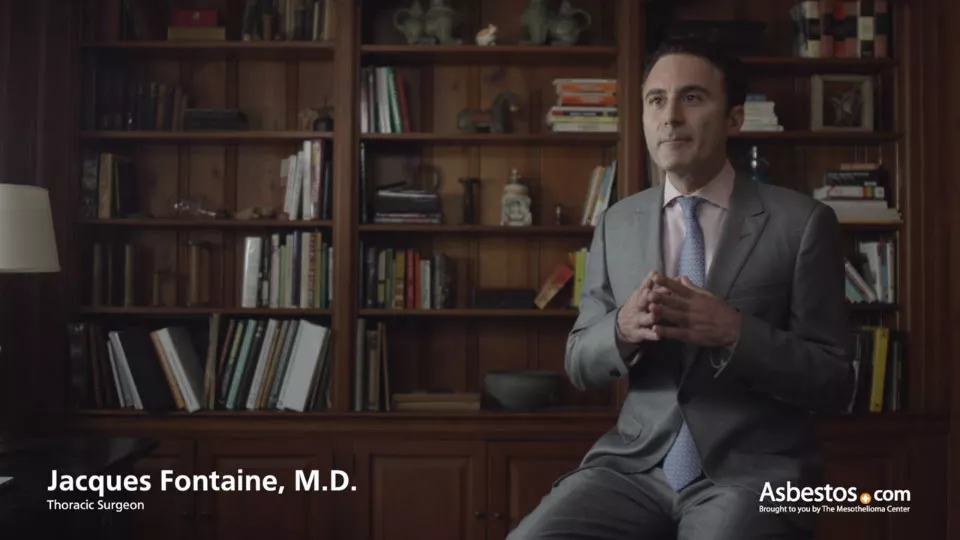
Survival rates for mesothelioma cancer vary by the patient’s age, gender, race and several other factors. The location, stage and cell type of the cancer, as well as your overall health, have the strongest influence on your mesothelioma prognosis.
Age
Overall, older mesothelioma patients have a much lower survival rate than younger ones. More than 55 percent of patients diagnosed before the age of 50 live one year, but less than 30 percent of patients 75 or older live the same amount of time.
This difference is largely because younger patients are eligible for more intensive treatments such as surgery. Older individuals may not be candidates for these procedures because of poor overall health or a high risk of complications.
Mesothelioma One-Year Survival by Age Range
However, it is rare for someone younger than 50 to be diagnosed with mesothelioma. The average age at diagnosis is 69.Rates are similar for long-term survival. Patients diagnosed before age 50 have nearly a 25 percent chance of surviving a decade, while that drops sharply — to 5.4 percent — for patients between the ages of 50 and 64.
The five-year survival rate for patients diagnosed between ages 65-74 is 6.7 percent. That rate falls to 3.8 percent for those 75 or older.
Gender
Research shows women with mesothelioma experience nearly three-fold better survival rate compared to men. After analyzing mesothelioma cases reported in the National Cancer Institute’s SEER database from 1988 to 2013, researchers found the overall five-year survival rate for men was 7 percent, compared with 15 percent for women.
Mesothelioma Survival Rates by Gender
When asbestos use was far more pervasive decades ago, the few women who did develop a related illness were usually exposed because they lived near mines or factories — especially those that processed the mineral. Women also found themselves exposed by spouses, family members or friends who worked around asbestos and brought home the tiny fibers on their clothes.Most asbestos exposure occurs in the workplace, particularly in industrial jobs traditionally held by men. That helps explain why men account for the majority of all mesothelioma cases.
Although numerous factors contribute to patient survival, women with mesothelioma appear to survive longer than men regardless of age, cancer stage, race or type of treatment. For every age group studied in the SEER program, women fared significantly better than men.
There is currently no conclusive answer as to why, but some researchers believe the improved survival could be explained by hormonal differences between genders.
Women are also more likely to be diagnosed with peritoneal mesothelioma, which carries a better prognosis compared to the more common pleural type.
Race
Mesothelioma is almost exclusive to white individuals, who make up 95 percent of patients.
This vast difference may be in large part because black and Hispanic individuals are less likely to be diagnosed with any type of cancer, mesothelioma included. Data from SEER shows blacks and Hispanics account for only 8 percent of all cancer diagnoses.
Although race does not appear to impact mesothelioma survival rate much initially, race becomes a more telling factor as time passes. From three years on, the survival rate of white patients is slightly worse than black patients.
Five-year survival among whites is 7.8 percent, compared with 12 percent for blacks. After 10 years, only 4.4 percent of white patients survive, while 8.2 percent of blacks are alive a decade after diagnosis.
SEER data used to calculate these survival rates includes Hispanics among patients who identify as both black and white. Because mesothelioma is rarer among other races, reliable survival statistics are not available.
According to a 2015 study analyzing 13,734 pleural mesothelioma cases in the SEER database, black patients lived longer than white patients despite being less likely to undergo aggressive surgery. Only 18 percent of black patients in the study had surgery, compared to 24 percent of white patients.
Typically, mesothelioma patients who have surgery survive longer than those who do not.
There are four types of mesothelioma, and the site where the cancer originates can greatly affect patient survival.
Of the two most common mesothelioma types — pleural and peritoneal — survival is significantly better for peritoneal mesothelioma patients. This, however, has not always been the case.
Before the emergence of an advanced peritoneal mesothelioma therapy called hyperthermic intraperitoneal chemotherapy (HIPEC) that combines cytoreductive surgery and heated chemotherapy, median survival for untreated patients was about six months.
This compares to a median survival of less than 12 months for patients with untreated pleural mesothelioma. In select studies, heated chemotherapy has boosted peritoneal mesothelioma survival to between 40 and 92 months.
According to a 2015 meta-study analyzing 20 years of data from 1992 to 2012, the five-year survival rate for peritoneal mesothelioma patients is more than five-times higher than the rate for pleural patients.
The remaining two types — pericardial and testicular mesothelioma — when combined, account for less than 2 percent of all mesothelioma cases. Median survival for testicular mesothelioma, the rarest type, is 24 months. About 40 percent of patients die from the disease.
Pericardial mesothelioma, which develops on the lining of the heart, has a median survival ranging from six to 10 months.
Stage of Cancer
The stage of your cancer at diagnosis is a strong predictor of overall survival. Survival is best among people diagnosed with mesothelioma at an early stage, before cancer spread starts to limit treatment options.
Early-stage patients who receive prompt treatment experience improved survival because they are more likely to qualify for surgery and other aggressive treatments associated with better outcomes.
Typically, pleural mesothelioma is not diagnosed until it reaches stage 3 or stage 4, the last stages of development. This can include a larger tumor or extensive cancer spread throughout the body. Later stages of mesothelioma are more difficult to treat effectively, so these patients have worse survival rates.
A late diagnosis is common because it can take 20 to 50 years after asbestos exposure for mesothelioma to develop, and many people don’t experience symptoms until the cancer has already reached an advanced stage.
While there is no established staging system for peritoneal mesothelioma, some researchers have proposed their own systems based on the TNM system, which uses tumor size, lymph node involvement and cancer spread to describe the extent of many types of cancer.
One such novel staging system has three stages based on TNM characteristics and a measure of tumor burden called the peritoneal cancer index (PCI). In a 2011 international study involving 294 peritoneal mesothelioma patients treated with cytoreductive surgery and heated chemotherapy, researchers used this system to describe patient survival.
One-year survival for stage 1 patients was 94 percent, 87 percent for stage 2 and 66 percent for stage 3. The researchers also calculated five-year survival, which was 87 percent for stage 1, 53 percent for stage 2 and 29 percent for stage 3.
Tumor Histology
The histology, or cellular makeup, of a mesothelioma tumor is also an accurate predictor for patient survival. Mesothelioma has three primary cell types: Epithelial, sarcomatoid and biphasic. They differ not only in appearance, but also in behavior.
With a median survival of 12 to 24 months, epithelioid mesothelioma — the most common cell type — has the best prognosis. Epithelioid cells are the least aggressive and respond best to treatment.
Sarcomatoid mesothelioma, on the other hand, has a median survival of six months. Sarcomatoid tumors exhibit more aggressive behavior in terms of cell growth and invasive spread. Biphasic mesothelioma, which has both epithelioid and sarcomatoid features, has a median survival of 12 months.
In a large, multi-institutional study that investigated how tumor histology and other factors affect survival, researchers observed similar survival rates. Among more than 3,000 pleural mesothelioma patients, the epithelioid cell type had the best survival rate, with a median survival of 19 months. Sarcomatoid patients experienced a median survival of eight months, the worst outcome of all cell types. Median survival for biphasic patients was 13 months.





